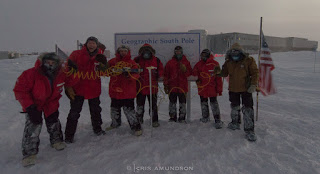Dynamic Routing with Virtual Appliances
Meeting Brad Hedlund in person was definitely one of the highlights of my Interop 2013 week. We had an awesome conversation and quickly realized how closely aligned our views of VLANs, overlay networks and virtual appliances are.
Not surprisingly, Brad quickly improved my ideas with a radical proposal: running BGP between the virtual and the physical world.
Long Live Just Good Enough!
Today's Dilbert is dedicated to every networking and security vendor selling us just good enough solutions.
Huge "Thank you!" to Scott Adams for another well-explained documentary!
IPv6 uRPF and Neighbor Discovery Throttling
IPv6 source address spoofing should be old news – it’s no different from its IPv4 counterpart. Neighbor discovery exhaustion attack is an IPv6-only phenomenon enabled by huge IPv6 subnet sizes.
During the IPv6 Security webinar, Eric Vyncke described Cisco IOS mechanisms you can use to cope with both. Enjoy!
Network Virtualization at ToR switches? Makes as much sense as IP-over-APPN
One of my blogger friends sent me an interesting observation:
After talking to networking vendors I'm inclined to think they are going to focus on a mesh of overlays from the TOR, with possible use of overlays between vswitch and TOR too if desired - drawing analogies to MPLS with ToR a PE and vSwitch a CE. Aside from selling more hardware for this, I'm not drawn towards a solution like this bc it doesn't help with full network virtualization and a network abstraction for VMs.
The whole situation reminds me of the good old SNA and APPN days with networking vendors playing the IBM part of the comedy.
VRRP, Anycasts, Fabrics and Optimal Forwarding
The Optimal L3 Forwarding with VARP/VRRP post generated numerous comments, ranging from technical questions about VARP (more about that in a few days) to remarks along the lines of “you can do that with X” or “vendor Y supports Z, which does the same thing.” It seems I’ve opened yet another can of worms, let’s try to tame and sort them.
Scott Shenker on OpenFlow and SDN
Brent Salisbury sent me a link to a fantastic OpenFlow/SDN presentation Scott Shenker did @ Stanford University a few days ago. It’s a perfect introduction to the fundamental ideas behind SDN and therefore a must-see for everyone vaguely involved in networking.
Here are some of the highlights (from my highly biased perspective):
What is Network Virtualization
Brad Hedlund wrote another great article, this one explaining the fundamentals of network virtualization. As you'll see, VMware (and everyone else) aims way higher than replacing VLANs with overlay networks. Highly recommended!
Simplify Your Disaster Recovery with Virtual Appliances
Regardless of what the vendors are telling you, it’s hard to get data center disaster recovery right (unless you’re running regular fire drills), and your job usually gets harder due to the intricate (sometimes undocumented) intertwining of physical and virtual worlds. For example, do you know how to get the firewall and load balancer configurations from the failed site implemented in the equipment currently used at disaster recovery site?
Imagine a simple application stack with a few web servers, app servers and two database servers. There’s a firewall in front of the web servers and a load balancer tying all the segments together.
BGP Best External Explained
Loads of niche features got crammed into (MP)BGP and MPLS since I wrote my MPLS books, most of them trying to tweak BGP (a scalable and reasonably slow routing protocol dealing with behemoth tables) to behave more like an IGP would.
It looks like we’ll never see updated versions of the books, so I’ll try to cover the new features with short videos. The first one on the list: BGP Best External – a mechanism that speeds up MP-IBGP convergence in primary/backup PE-CE scenarios using EBGP.
Optimal L3 Forwarding with VARP and Active/Active VRRP
I’ve blogged about the need for optimal L3 forwarding across the whole data center in 2012 when I introduced it as one of the interesting requirements in Data Center Fabrics webinar. Years later, the concept became one of the cornerstones of modern EVPN fabrics, but there are still only a few companies that can deliver this functionality in a more traditional environment.
Could IXPs Use OpenFlow to Scale?
The SDN industry probably considers me an old and grumpy naysayer (and I’m positive Mrs Y has a special place in their hearts after her recent blog post), so I tried really hard to find a real-life example where OpenFlow could be used to solve mid-market innovator’s dilemma to balance my usual OpenFlow and SDN presentation.
Hyper-V 3.0 Extensible Virtual Switch
It took years before the rumored Cisco vSwitch materialized (in the form of Nexus 1000v), several more years before there was the first competitor (IBM Distributed Virtual Switch), and who knows how long before the third entrant (recently announced HP vSwitch) jumps out of PowerPoint slides and whitepapers into the real world.
Compare that to the Hyper-V environment, where we have at least two virtual switches (Nexus 1000V and NEC's PF1000) mere months after Hyper-V's general availability.
Published on , commented on July 10, 2022
OpenFlow and SDN – Do You Want to Build Your Own Racing Car?
The OpenFlow zealots are quick to point out the beauties of the centralized control plane, and the huge savings you can expect from using commodity hardware and open-source software. What they usually forget to tell you is that you also have to reinvent all the wheels the networking industry has invented in the last 30 years.
Celebrating 40 years of Ethernet ... at south pole
Did you know Ethernet turned 40 today? I didn't (I was never good at tracking anniversaries), but Kris Amundson (the engineer keeping his network up and running in pitch dark Antarctica) quickly brought it to my attention with wonderful photos of South Pole Ethernet network built @ -69C (that's -92F if you're still ignoring the metric system).
Even better, they still have a thick coax cable with transceiver screwed into it!
Thanks for sharing, Kris! Really appreciated ;)
The Dangers of Ignoring IPv6
I was sitting next to a really nice security engineer during the fantastic dinner-in-a-wine-cellar @ Troopers 13 and as we started talking about security implications of ignoring IPv6, I was quickly able to persuade him that it's dangerous to pretend IPv6 doesn't exist and that even though you might choose not to deploy it, you still have to acknowledge it exists and take protective measures.
It’s always great fun to explain the dangers of ignoring IPv6 to a networking or security audience, and see some people muttering “oh, ****”



